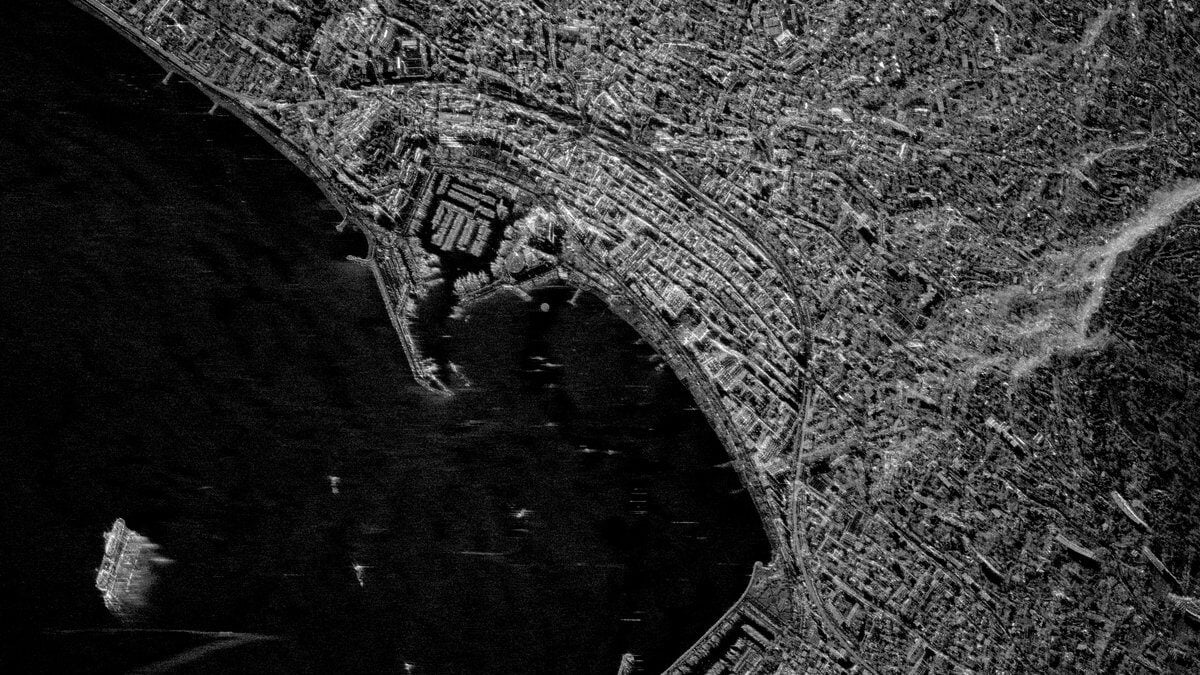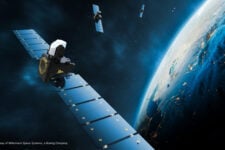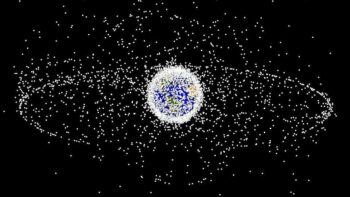
Umbra SAR satellite image of Cannes, France (Umbra)
GEOINT 2023 — The Defense Advanced Research Projects Agency (DARPA) has awarded four companies contracts to provide data about formation flying of synthetic aperture radar satellites and algorithms for imagery processing, as part of an overarching effort to develop capabilities for what it calls “Mosaic Warfare” — a future version of multi-domain operations on steroids.
Under the new program, Digital Radar Image Formation Technology (DRIFT), SAR-sat operators Umbra and Terran Orbital’s PredaSAR will demonstrate at least two sats, each, flying formation to better see a target area to allow fusion of imagery via advanced processing. Umbra’s award is worth up to $4.5 million; PredaSAR’s, $500,000. Northrop Grumman and Jacobs were granted contracts worth $3.9 million and $4 million respectively to process the data gathered from those satellites.
DARPA kicked off the DRIFT effort in 2022, noting in its budget documents for fiscal 2023 that the program will “expand the utility of small SAR satellites, including commercial satellites, for military applications.” The agency asked for $13 million in its fiscal 2024 budget request.
DARPA’s goal is to explore how commercial SAR satellites, which can image through clouds unlike optical cameras, can be optimized as nodes in a future system-of-systems for future warfighting designed around compatible “tiles” of capabilities (think functions such as sensors and shooters), rather than uniquely shaped “puzzle pieces” (think platforms) that must be fitted into a specific slot in a battle plan in order for it to work.
Todd Master, Umbra’s chief operating officer and a former DARPA official, told Breaking Defense on May 22 that DRIFT “is a legitimately great example of how government can actually advance capability using commercial investments instead of just saying ‘leverage commercial’ over and over.”
He explained that the Defense Department’s far-future research agency is “taking advantage of money we’ve invested to build and deploy our systems and put out ideas on some alternative CONOPs [concepts of operations] and some tailored modifications in which we saw mutual value. Instead of evaluating commercial and saying ‘doesn’t meet requirements,’ and building their own systems, they found interesting ways to use what we are already building as a jumping point for their benefit.”
Umbra will provide DARPA with data from “at least two” SAR satellites, according to a May 22 press release from the company. Likewise, Terran Orbital said in a May 18 press release PredaSAR will also “provide data products from at least two SAR satellites flying in formation and demonstrate novel data processing algorithms. The conceptual design work is expected to take several months and may lead to follow-on opportunities for prototyping and demonstrations.”
Master said key to DRIFT will be data gathered by the bistatic radar, meaning its transmitter and receiver are separated in different locations, because it “provides some really unique collection phenomenology that offers more information” that using a single, monostatic system.
“At the most basic level, you can picture that radar imagery is measurement of reflections of things in the scene. If you’re looking from one angle, there are things that will be angled and make a bright reflection back to you, but something that’s angled away may not because of your viewing geometry,” he said. “Now imagine you’re illuminating the scene from one source and receiving that reflection at a different location. You’ll see a unique set of reflections, giving you better insights than you’d get from one alone.”






















